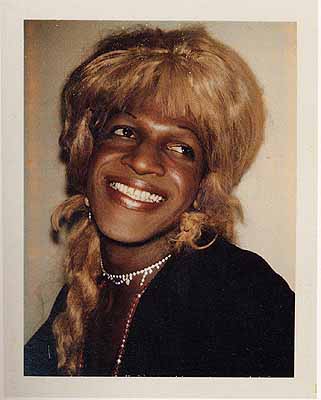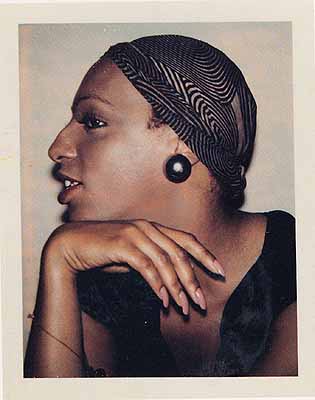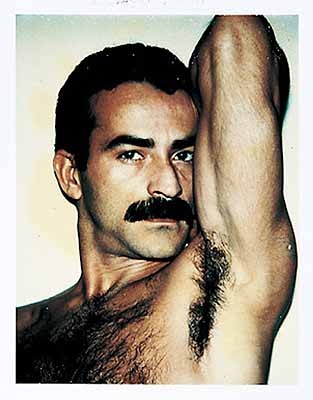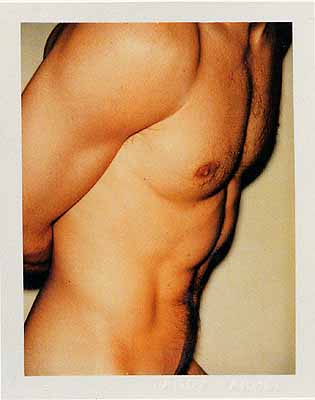
Andy Warhol »
Polaroïds - Ladies and Gentlemen, Torsos, Sex Parts
Exhibition: 20 Feb – 29 May 2004
Galerie Vedovi
11, boulevard de Waterloo
1000 Brussels
+32 (0)2-5133838
This exhibition presents models’s polaroïdes shooted by Andy Warhol, the King of Pop Art , from 1970 until 1985. Those original pictures could be classified in three families : Ladies and Gentlemen (shots of drags), Torsos (shots of men, women, genitals and chests) and Sex Parts (shots of male genitals and gay sex). Warhol has ever been fascinated by photography. Even child, he collected movie stars pictures : he felt himself impressed by all those icons of the present time. At the beginning, photographs were tools to go through painting to a new kind of art based on impression. In the 70’s, Warhol’s photographs are like a diary, relating important or less events, famous or anonymous encountered peoples. Everything, every object was worthy of interest : shoes, candies, toys, animals, iconic figures… but above all the human character. A lot of those polaroïdes were used as silkscreen on canvas or on paper. Those pictures were a sociological mirror of the Factory but also a kind of archive wherein the artist felt free to choose according to his inspiration. The several angles shot of a same character was essential for the after selection of the right picture, as he did for example with Jackie Kennedy’s or Marilyn Monroe’s shots plates. The exhibited Warhol’s polaroïdes illustrate predilection themas : the human face, homesxuality, drags and transexuals, pornography. Luciano Anselmino, one of Warhol’s friends, suggested him the creation of a portfolio based on his movies characters. Warhol’s assistants went to the Gilded Grape, a bar on the Eight Avenue and 45th Street, to meet anonymous models who would agree a shooting session. Unaware the photographer’s identity, ten agreed : the ten first models of the Ladies and Gentlemen serie (portfolio of ten serigraphies edited by Anselmino and printed by Einrici, edition 125). Male, drags and female models were very often shooted under several angles. Those sometimes complicate attitudes look like those of a real movie or fashion star trying to reach their photographer’s inspirations. Warhol considers each identity as a unique and genuine one. He glorifies and transcends them. Those faces, showed under several points of view, force their heavily made-up and frozen companies to us but also their integrity, private personnality and above all, their pride of being watched, admired. Warhol liked their own unicitiy, besides their ambiguity. The desire of being the one, the onlyone and the most beautiful woman was common for all those met drags. That was thus for him an incredible source of inspiration. I’m fascinated by boys, who spend their lives trying to be complete girls, because they have to work so hard – double-time – getting rid of all the tell-tale mal signs and drawing in all the female signs . Torsos illustrates male and female models. We know that lots of people wished to enter the Factory. First of all, Warhol asked them to undress for shots. Whenever somebody came up to the Factory, no matter how straight-looking he was, I’d ask him to take his pants off so I could photograph his cock and balls. It was surprising who’d let me and who wouldn’t (Andy Warhol, The Warhol Look : Glamour, Style, Fashion, Pittsburgh, 1997, p.291). This voyeurism, this fascination for the recomposed naked body in several shots, haunts the artist who destinated himself at the forced glorifiaction of the naked man in a frontaly way presented, in his sexuality and in his gay relations. Beyond their explicitness, the Polaroïdes – like the silkscreens – reveal (Warhol’s) wish to crop sexuality, to see how much or how little flesh can fit into the Big Shot camera’s limited frame, and to observe how these spatial restrictions estrange and sunder the body. He never opts for a full body shot ; he limited himself usually to a groin, chest, midsection, or rear. He particulary favored a cropping that isolated, as a unit, the groin, upper thighs, and abdomen. Andy considered his series abstract : he called them landscapes . (W. Koestenbaum, Andy Warhol, New York, 2001, p.185) . Full illustrated catalogue available at the Gallery. All pictures under copyright The Andy Warhol Foundation for Visual Arts


